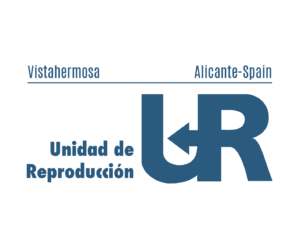Reproductive techniques have changed greatly since their inception over 30 years ago. We have embryo vitrification available to us, and this has revolutionised our way of working in a very positive way. It is a very safe technique with survival rates that vary from 80 to 95% depending, primarily, on embryo quality. This technique allows us to do the transfer during the patient’s next cycle or whenever she chooses for personal reasons. Once the patient decides to have the embryos transferred, several endometrial preparation options may be suggested.
The objective is to transfer the embryo into the endometrial cavity when the patient’s endometrium is receptive. This will depend on the embryo’s days of life, since embryos can only be implanted on a few specific days. This period is called the “embryo implantation window”.
Numerous studies have been conducted on which type of preparation is better, but none has been shown any superiority over another. We currently have two types of endometrial preparation: natural cycle and replaced cycle.
The modified natural cycle
Is based on monitoring the patient from the first days of her period by doing various ultrasounds until it is shown that she has a follicle of the right size. From there, ovulation is induced by medical treatment (B-hCG or pregnancy hormone) so that, a few days later, vaginal progesterone is started and the endometrium is transformed until the day the embryo transfer is carried out.
This form of preparation is recommended only for patients who have regular cycles that are not too long and who do not wish for any medical treatment.
Within the natural cycle, there is a variant that consists of doing exactly the same thing as the modified cycle, but without inducing ovulation by using medical treatment. The patient is monitored only with ultrasounds until we confirm there is a good-sized follicle.
Studies and types of endometrial preparation
From there on, the patient must perform several urine ovulation tests. It is hardly used nowadays, due to the high cancellation rates and the difficulty it has in some patients with irregular cycles.
The substituted cycle
Is based on monitoring the endometrium in patients who are treated using low doses, either orally or topically, in the form of ointments or patches. This type of preparation is commonly used due to its high safety, convenience and good results, especially in egg donation cycles. This is because of the irregularity and poorer quality of menstrual cycles in women of advanced maternal age.
We have mainly two variables:
- The replaced without agonist variable:
Consists of giving the patient low daily doses within the first days of her period and checking via ultrasound whether the thickness and type of endometrium are correct. Once this has been confirmed, progesterone is administered and embryo transfer is carried out a few days later. - The substituted with GnRH agonist variable: Is based on having a substituted cycle with low-doses. With this variable, it is administered either in the luteal phase of the previous cycle as single agonist dose, or with five to seven antagonist doses from the day the patient begins taking the oestrogens.
After 10-14 days of oestrogens, the endometrium is checked to see whether the endometrium is right.
If so, progesterone administration and embryo transfer are carried depending on the day of life of the embryo, just as in the cycle without an agonist.




